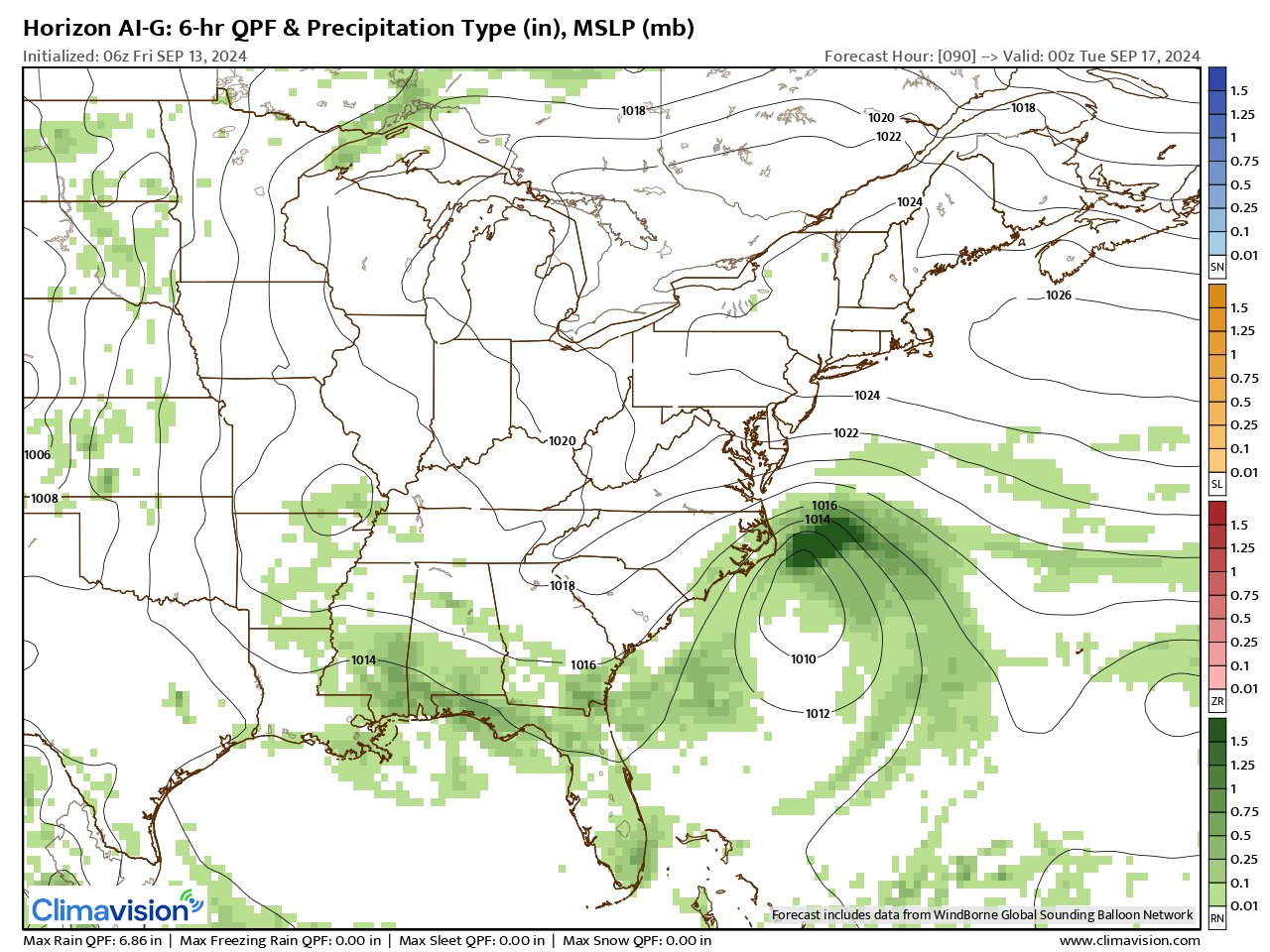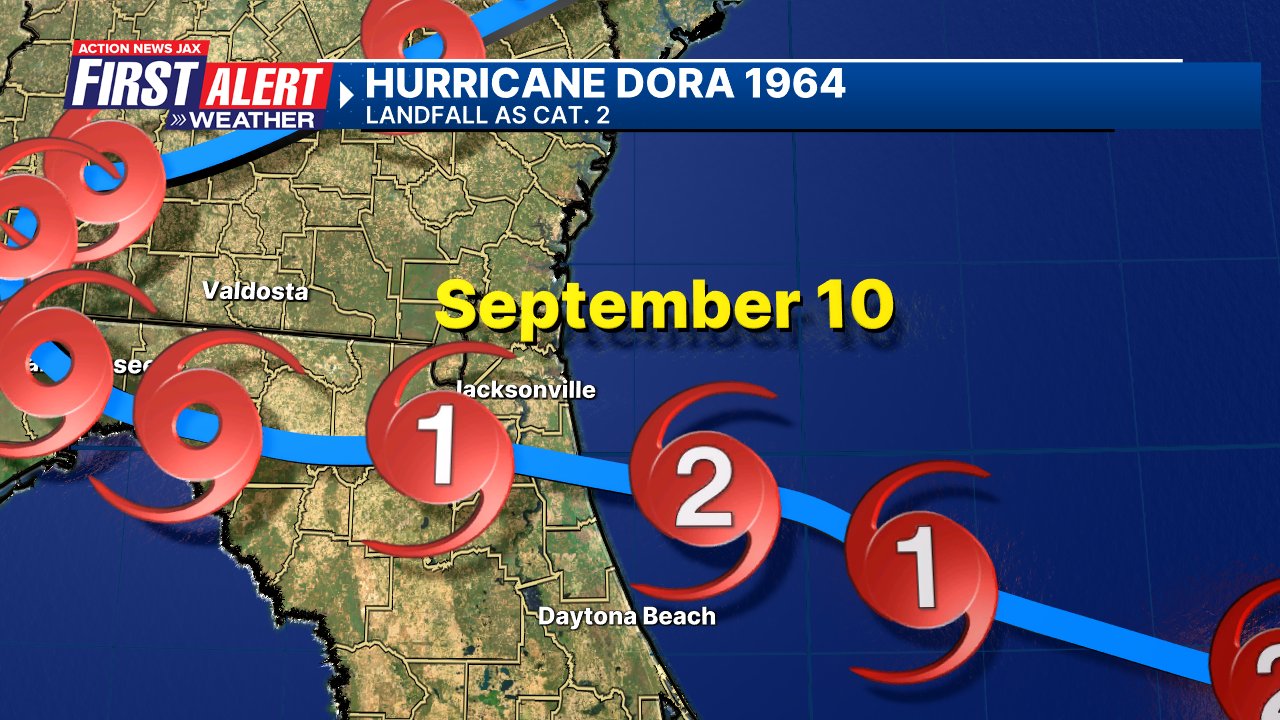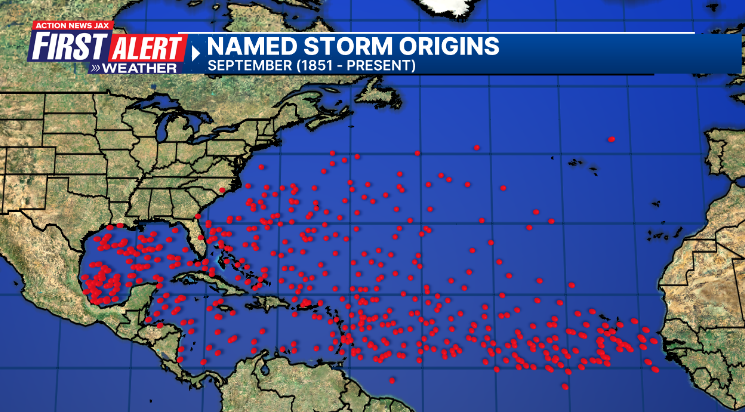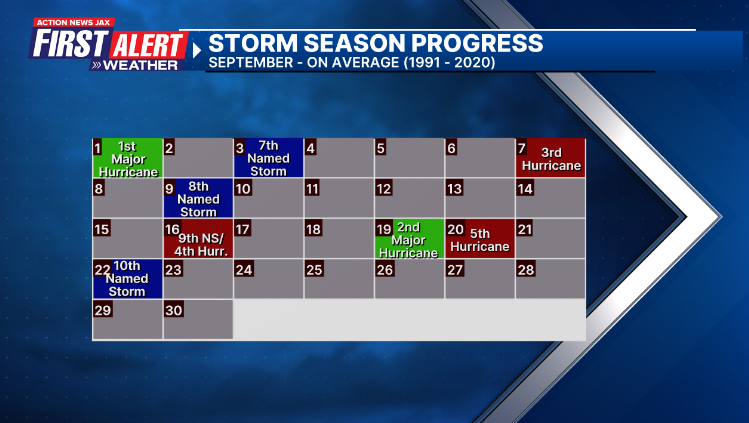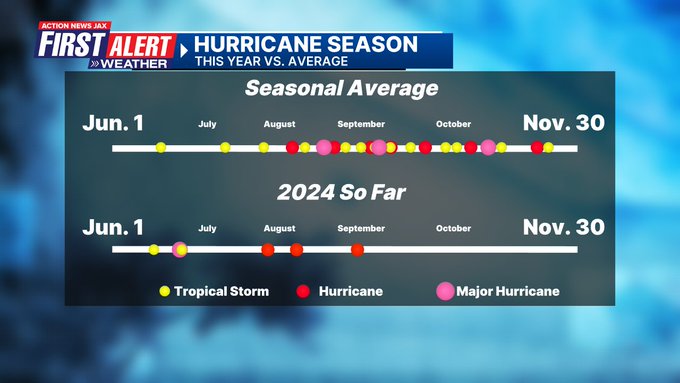Jacksonville, Fl. — The “Buresh Bottom Line”: Always be prepared!.....First Alert Hurricane Preparation Guide... City of Jacksonville Preparedness Guide... Georgia Hurricane Guide.
STAY INFORMED: Get the * FREE * First Alert Weather app
FREE NEWS UPDATES, ALERTS: Action News Jax app for Apple | For Android
WATCH “Preparing for the Storm”
WATCH “The Ins & Outs of Hurricane Season”
READ the First Alert Hurricane Center “Preparation Guide”
***** ALWAYS CHECK & RE-CHECK THE LATEST FORECAST & UPDATES! ****
Tropics threats for Jacksonville/NE Florida/SE Georgia: No direct impacts from tropical systems *but* onshore flow will increase again with rough seas & surf = a high rip current risk through the weekend. The heavy rainfall & flooding threat remains through Friday with some extra tropical moisture & upper level disturbances rotating around the circulation around weakening Francine over the Tennessee Valley.
“Buresh Bottom Line”:
* Last NHC advisory on “Francine” late Thu. as the remnant low weakens then dissipates. Heavy rain & a threat for tornadoes continues over parts of Mississippi & Alabama to as far north as Arkansas, Tennessee & Kentucky & as far east as the Florida Panhandle & Georgia into Friday.
* A couple of tropical waves over the Central & Eastern Atlantic + tropical depression #7 - could be “Gordon” but looks to stay far out to sea.
* Low pressure is expected to develop east/northeast of Florida & near north of the Bahamas over the weekend then move north/NW possibly acquiring tropical or subtropical characteristics. Heads up from the Carolina’s to Chesapeake Bay & nearby areas next week.
The Atlantic Basin Overview:
(1) ‘91-L′ - “Potential Tropical Cyclone Six” was upgraded to tropical storm “Francine” Mon. morning becoming a hurricane Tue. evening then made landfall near 6pm EDT as a Cat. 2 - 100 mph hurricane about 30 miles S/SW of Morgan City & about 90-100 miles west/southwest of New Orleans before being downgraded to a tropical storm late Wed. evening just west of New Orleans... then to a tropical depression over Mississippi early Thu. Francine was a product of the Caribbean wave I had been tracking for the past 7+ days reached the Yucatan Peninsula Friday & moved over the Bay of Campeche over the weekend merging with low pressure that dropped south from Texas.
Weak to moderate upper level troughing persists over the Central & Eastern U.S. helping to create the alleyway for Francine. Dry air quickly ate away the underside (south) of the circulation while moving inland. Francine’s remnants are stalled over the Tennessee Valley as the surface feature dissipates but the upper level “energy” (disturbance) will then drift south & southeast helping to enhance heavy rain & t’storms over much of the Southeast through Friday evening.
For the Atlantic: the sixth named - ‘F’ - storm of the season avg. date is Aug. 29th... the 4th hurricane avg. date is Sept. 16th.
(2) The next area to keep a watch - as far as possible land impacts - is the Southwest Atlantic. Virtually all models develop low pressure east of Florida over the weekend that moves north then bends back some to the northwest. Such a track puts the Carolina’s on alert for a *possible* tropical system by Mon. into Tue. though models have generally trended west & north due to an upper level trough staying a little more to the west & parked essentially over the Eastern U.S. The Climavision ‘Horizon’ model (see map further down) has indicated this potential for several days & was locked in on a tropical storm landfall on the Central & Northern North Carolina coast by Monday but has recently pushed the system a little more north up the coast. In any case - Heads-up U.S. east coast next week.
(3) Multiple tropical waves are moving west & northwest between the Caribbean & Africa - something one would expect this time of year. At least one - ‘92-L’ appears to be losing its development potential while a stronger tropical wave - ‘93-L’ to its east was upgraded Wed. morning to tropical depression seven. #7 is likely to become at least a tropical storm - though it will battle some shear & nearby dry air. T.D. #7 is likely to stay far to the east over the Atlantic as the Bermuda high remains displaced to the east & northeast over the Atlantic. Such a position favors an alleyway for systems to turn north over the Central Atlantic... at least over the next 10-12 days or so.
Fitting the pattern for the increased tropical activity overall - as well as the recent wet/cloudy spell for Florida - is persistent & seasonally strong surface high pressure at northern latitudes from the Central U.S. to the Northwest Atlantic. This high pressure will bring has brought an early taste of fall across the Northern U.S. & generally encourages low pressure to the south - a pattern that often favors tropical development at southern latitudes. It’s Mother Nature’s constant balancing/compensating act. And it’s likely why we’ve seen forecast models struggle with the overall pattern developing sometimes spurious & frequent low pressure areas near & south of about 35 degrees N.


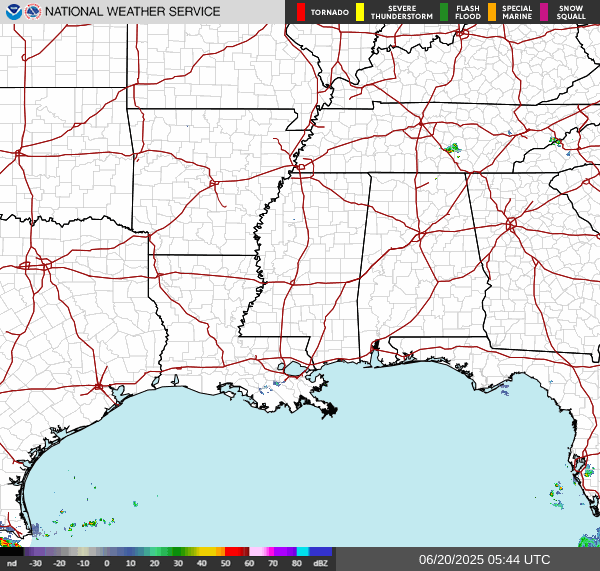


Francine’s heavy rain & flooding threat north all the way to Memphis & Paducah. Very heavy rain for much of the Southeast yet again for the next few days with or without direct influence from the tropics:


Climavision ‘Horizon’ model for late Monday, 09/16 showing low pressure (trop depression or storm) east of the Carolina’s which is trending more north before a turn to the northwest:


‘Velocity potential anomalies’ below shows “sinking” air (brown lines) across the Atlantic Basin gradually breaking down. In such a state, tropical development can occur but overall conditions are not as conducive as when there is overall rising (green lines) air such as much of the Pacific Basin where convection is active. This “pulse” of upward motion is moving eastward toward the Atlantic Basin & is likely aiding “Francine” as well as future systems over the next 1-2 weeks.
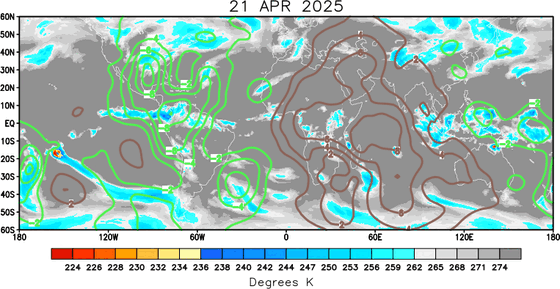
Historical Note: 60 years ago - Cat. 2 hurricane “Dora” made landfall in St. Johns Co. north of St. Augustine just after midnight Sept. 10, 1964. Then President Lyndon B. Johnson visited Jacksonville Beach declaring NE Fl. a national disaster area... while the Beatles still played in Jax. Florida Times-Union report & photos * here *. Dora is the last hurricane eye to make landfall on the Northeast Florida coast. And 7 years ago Irma hit Florida - see the “Buresh Blog” for a recap on the 2017 storm.
REMEMBER WHEN A TROPICAL STORM OR HURRICANE IS APPROACHING: Taping windows is *not* recommended & will not keep glass from breaking. Instead close curtains & blinds.
Realize the forecast cone (”cone of uncertainty”) is the average forecast error over a given time - out to 5 days - & *does not* indicate the width of the storm &/or where damage might occur.
The upper oceanic heat content (UOHC) [tropical cyclone heat potential/TCHP] across the SW Atlantic, Gulf & Caribbean is very high:






Water vapor loop (dark blue/yellow is dry mid & upper level air):


September tropical cyclone origins (early season breeding grounds are the Gulf &/or Western Caribbean:
Averages below based on climatology for the Atlantic Basin for September (2 hurricane so far, 3 tropical storms):
Wind shear (red - strong shear; green - low shear):



Saharan dust spreads west each year from Africa driven by the prevailing winds (from east to west over the Atlantic). Dry air = yellow/orange/red/pink. Widespread dust is indicative of dry air that *can* interfere with the development of tropical cyclones. However, sometimes “wanna’ be” waves will just wait until they get to the other side of - or away from - the dust plume then try to develop if other conditions are favorable (we’ve already seen this with Beryl & Debby this year). In my personal opinion, there is way too much “hoopla” about the presence of Saharan dust & how it relates to tropical cyclones. In any case, the peak of Saharan dust typically is in June & July.

2024 names..... “Gordon” is the next name on the Atlantic list (names are picked at random by the World Meteorological Organization... repeat every 6 years). Historic storms are retired [Florence & Michael in ’18 (the last time this year’s list was used)... Dorian in ’19 & Laura, Eta & Iota in ‘20, Ida in ‘21 & Fiona & Ian in ‘22]). In fact, this year’s list of names is rather infamous because of the ‘04 season when Charley, Frances, Jeanne & Ivan - all retired names - hit Florida within a matter of about 6 weeks. The WMO decided - beginning in 2021 - that the Greek alphabet will be no longer used & instead there will be a supplemental list of names if the first list is exhausted (has only happened three times - 2005, 2020 & 2021). The naming of tropical cyclones began on a consistent basis in 1953. More on the history of naming tropical cyclones * here *.

Peak of the hurricane season Sept. 10th:




East Atlantic:





Mid & upper level wind shear (enemy of tropical cyclones) analysis (CIMMS). The red lines indicate strong shear:
Water vapor imagery (dark blue indicates dry air):

Deep oceanic heat content over the Gulf, Caribbean & deep tropical Atlantic. The colors will brighten greatly as the water warms to greater depths deeper into the season:

Sea surface temp. anomalies:


SE U.S. surface map:

Surface analysis centered on the tropical Atlantic:

Surface analysis of the Gulf:

Caribbean:

Atlantic Basin wave period forecast for 24, 48, 72 & 96 hours respectively:





East & Central Pacific:
“Ileana”: A Tropical Storm WARNING: West coast of Baja California Sur Mexico from Santa Fe southward ... East coast of Baja California Sur Mexico from San Evaristo southward
A Tropical Storm WATCH: East coast of Baja California Sur Mexico north of San Evaristo to Loreto ... Mainland Mexico from Topolobampo to Huatabampito







Hawaii satellite imagery:


West Pacific:

Global tropical activity:

“Bebinca” is expected to become a typhoon while moving across some Japanese islands distant southwest of the mainland then into China late in the weekend/early next week:



Cox Media Group


